In the dynamic world of landscape design, innovation intertwines with nature, cultivating spaces that reflect both beauty and function. Today’s landscapes are more than mere backyards; they are sanctuaries that nurture the soul, promote sustainability, and celebrate the art of living harmoniously with the environment. In this listicle, we invite you to explore 23 inspiring elements that define modern landscape design. From the seamless integration of technology and nature to the bold use of color and texture, each element highlights a trend or technique that not only enhances aesthetic appeal but also fosters ecological well-being. Whether you’re a seasoned designer, a budding gardener, or simply someone looking to refresh your outdoor space, this curated selection will offer insights and inspiration, empowering you to create landscapes that captivate and endure. Prepare to embark on a journey through the latest in landscape design and discover how these transformative elements can elevate your own outdoor oasis.
Modern Landscape Design emphasizes sustainability with native plants for ecological balance
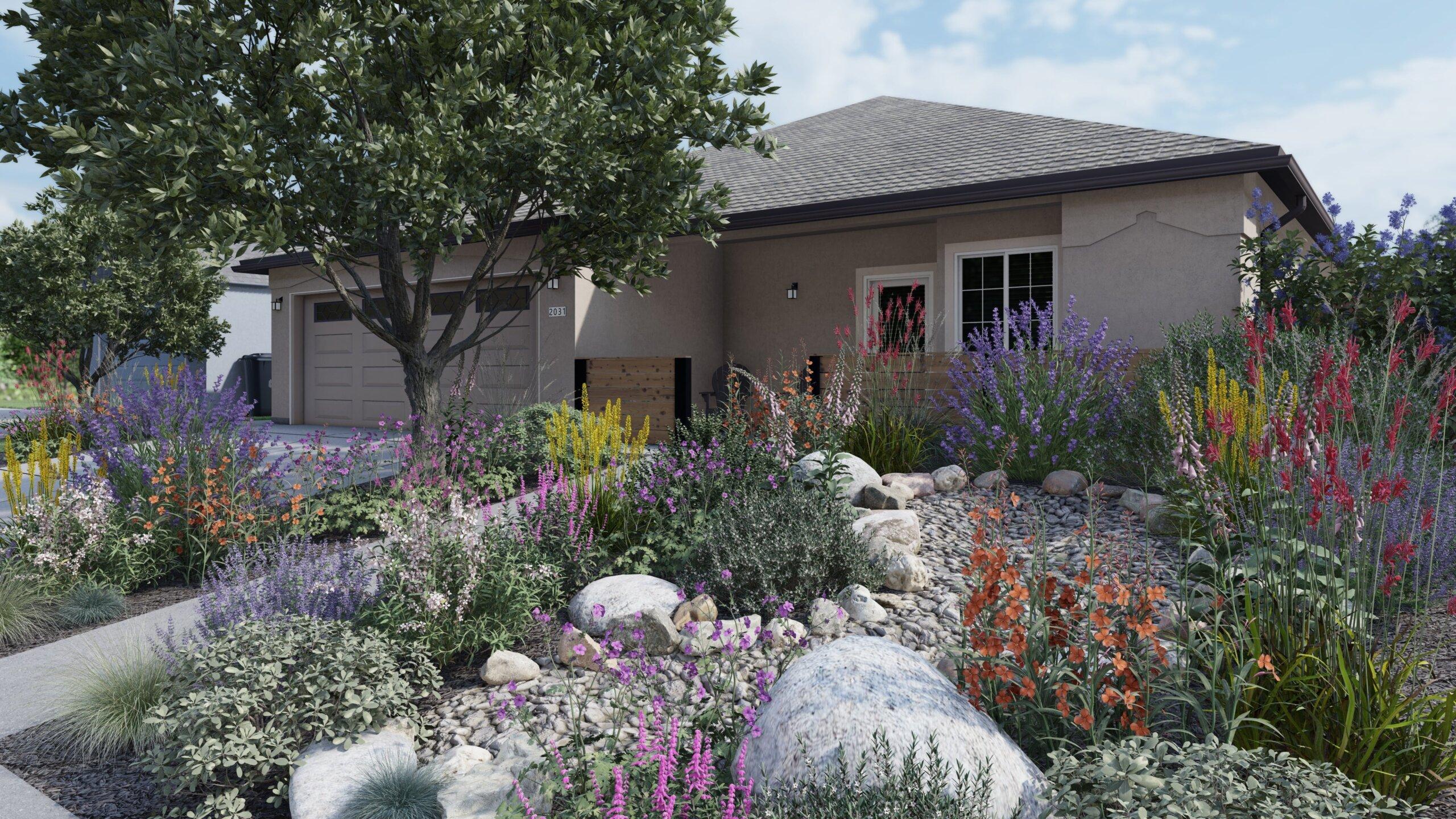
In the realm of contemporary landscape design, sustainability is not merely a choice; it’s a responsibility. Integrating native plants into garden layouts plays a pivotal role in promoting ecological balance. These flora not only thrive in local climates but also provide essential habitats for wildlife, from pollinators to birds. When you select native species, you reduce the need for irrigation, fertilizers, and pesticides, thus minimizing your environmental footprint. The beauty of working with these plants lies in their diversity: wildflowers, ferns, grasses, and shrubs are just a few examples of the stunning variety you can introduce into your outdoor spaces.
Moreover, the use of native plants facilitates a symbiotic relationship with the local ecosystem. They are inherently adapted to local soil types and weather conditions, making them more resilient against pests and diseases. This leads to lower maintenance and costs over time. Consider incorporating features such as pollinator gardens, rain gardens, and buffer zones filled with native shrubs to enhance biodiversity while creating visually striking landscapes. Not only does this approach provide aesthetic pleasure, but it also supports the health of your community’s ecosystem. For a deeper dive into the importance of native landscaping, check out Audubon.
The integration of smart technology enhances functionality in Modern Landscape Design
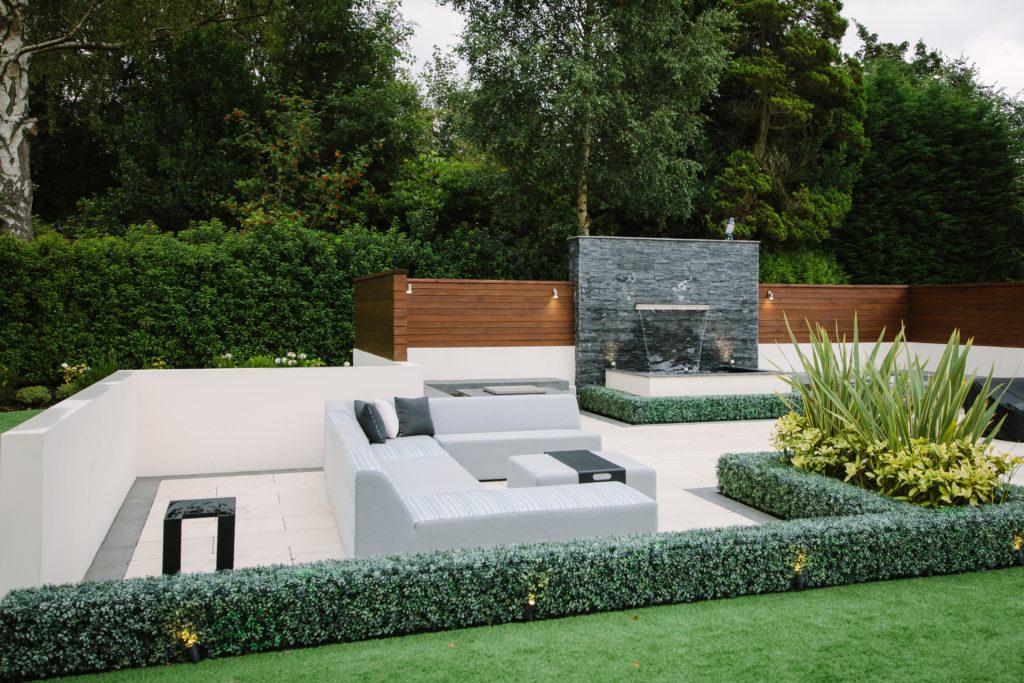
Smart technology plays a pivotal role in elevating modern landscape design, offering innovative solutions that not only beautify outdoor spaces but also enhance their functionality. With the integration of features such as smart irrigation systems, homeowners can significantly optimize water usage, ensuring that gardens thrive while conserving resources. This technology monitors soil moisture levels and weather forecasts, automatically adjusting watering schedules to meet the needs of the plants, leading to sustainable water management and healthy landscapes. Beyond irrigation, ambient lighting systems allow homeowners to control outdoor lighting through their smartphones, creating an enchanting atmosphere for evening gatherings while enhancing safety and security around the property.
The incorporation of smart garden sensors further enriches the landscaping experience. These devices track plant health, providing valuable insights into nutrient levels and environmental conditions. Such data enables gardeners to make informed decisions about plant care, resulting in vibrant gardens that flourish with minimal effort. Additionally, outdoor Wi-Fi enabled speakers can transform any garden space into an entertainment hub, allowing users to enjoy their favorite music or podcasts while relaxing outdoors. Explore more about the latest innovations in landscape technology on landscapeonline.com and discover how these advancements can reshape your outdoor experience.
Minimalist aesthetics streamline spaces in Modern Landscape Design, showcasing natural beauty
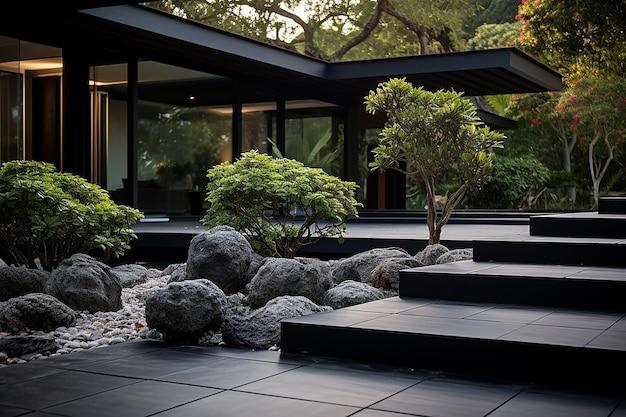
In the realm of modern landscape design, minimalist aesthetics play a pivotal role in transforming outdoor spaces into serene havens. By stripping away unnecessary clutter and focusing on essential elements, designers can highlight the natural beauty of the environment. Clean lines, open spaces, and natural materials such as stone, wood, and gravel work harmoniously to create a cohesive look. This approach not only enhances the visual appeal but also invites the surrounding landscape to take center stage, allowing plants and natural features to shine without distraction.
The integration of minimalist principles fosters a sense of tranquility and balance, making outdoor areas feel more welcoming and spacious. Geometric planters, symmetric pathways, and low-maintenance gardens serve as perfect examples of thoughtful design that embraces simplicity. By employing a carefully chosen palette comprised of soft earth tones and textured foliage, designers ensure that each element complements rather than competes with its surroundings. Such designs not only enhance curb appeal but also encourage a deeper connection with nature. For further inspiration on minimalist landscape design, explore more at architecturaldigest.com.
| Design Element | Impact |
|---|---|
| Geometric Planters | Brings structure and order to gardens |
| Symmetric Pathways | Creates flow and guides the eye |
| Low-Maintenance Gardens | Offers sustainability and ease of care |
| Natural Textures | Adds depth and visual interest |
Modern Landscape Design often features versatile outdoor living spaces for social gatherings
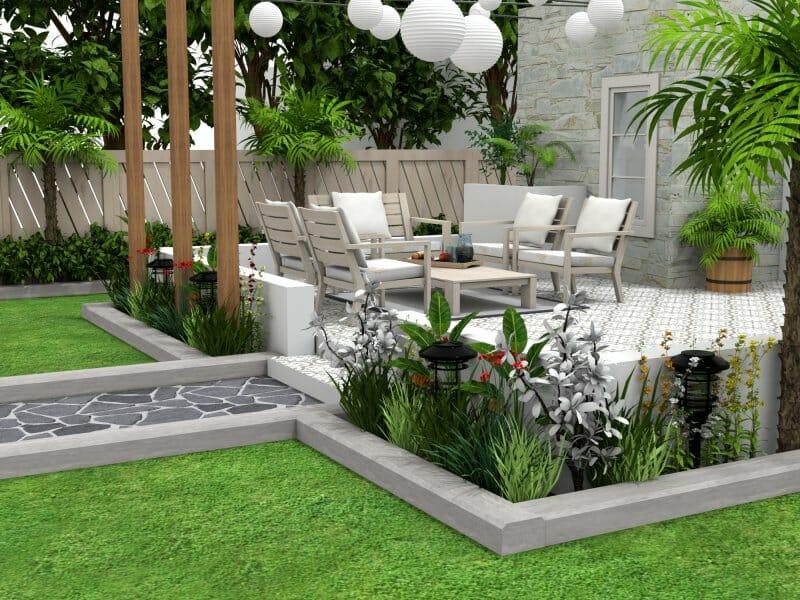
In modern landscape design, the emphasis on creating versatile outdoor living spaces reflects our changing lifestyles and social habits. Homeowners are increasingly moving beyond traditional decks and patios, opting for multifunctional areas that seamlessly blend comfort with style. These spaces often feature modular furniture that can be easily rearranged to accommodate different gatherings, whether it’s an intimate dinner party or a lively barbecue with friends. Elements such as fire pits, outdoor kitchens, and shade structures further enhance these areas, providing both functionality and ambiance. Imagine lounging around a fire with loved ones under twinkling string lights, fostering an ideal atmosphere for connection and relaxation.
To elevate the experience even more, modern outdoor spaces often incorporate landscaping elements that foster interaction and enhance the environment. Vertical gardens, living walls, and bio-retention ponds not only beautify the space but also contribute to an eco-friendly design ethos. Many of these areas also include outdoor movie screens and entertainment technology, making them perfect for watching games or movie nights under the stars. As we continue to embrace a lifestyle that values outdoor experiences, these innovative spaces serve as a testament to the transformative power of modern landscape design. For more inspiration, you can visit architecturaldigest.com.
Biophilic design principles are embraced in Modern Landscape Design for healthier environments
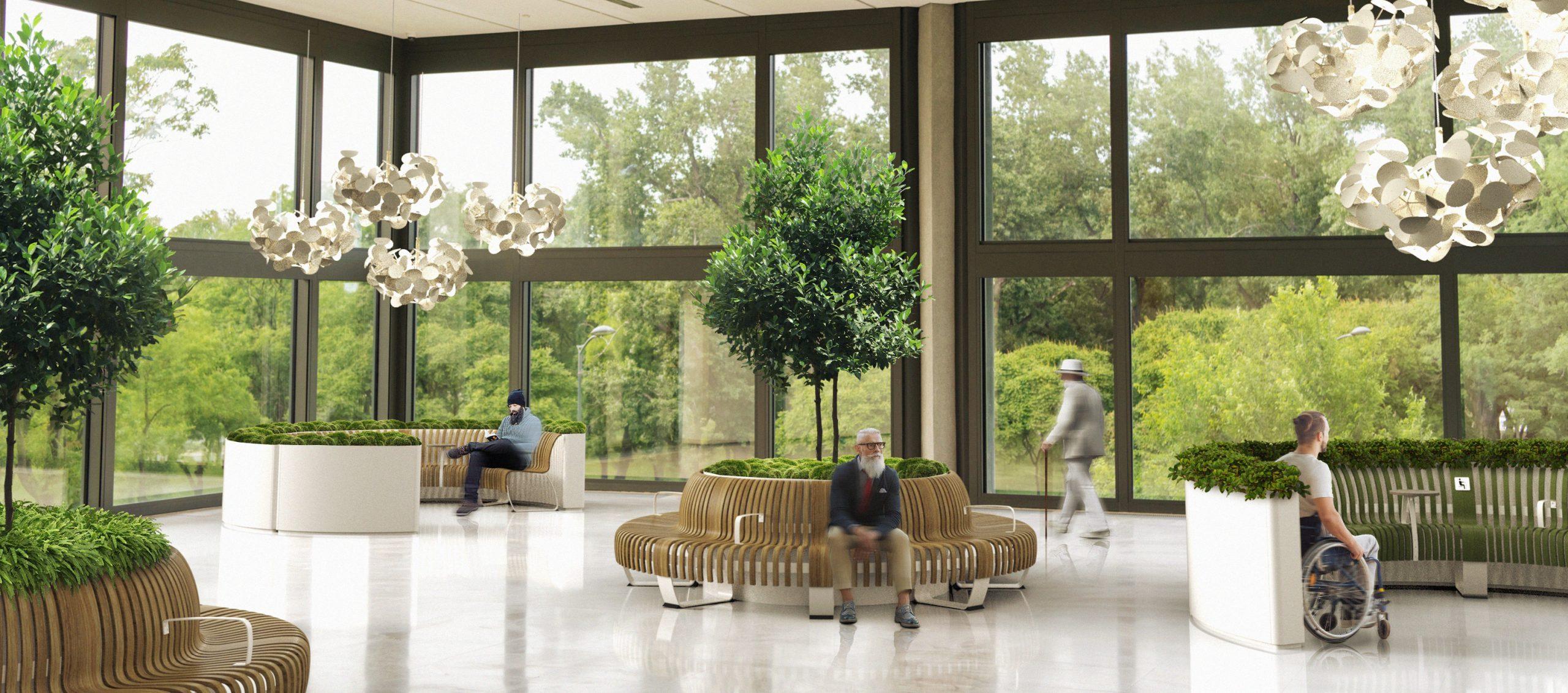
Modern landscape design increasingly adopts biophilic design principles, fostering a deep connection between people and nature. This approach emphasizes the integration of natural elements into urban spaces, resulting in healthier environments for both individuals and communities. By incorporating various features, designers create serene spaces that promote psychological well-being and physical health. Elements such as native plant selections, permeable surfaces, and natural water features not only enhance biodiversity but also improve air quality, offering a holistic approach to landscape architecture.
Using these principles, landscapes become more than just aesthetic additions; they transform into vibrant ecosystems. Designers often include living walls, green roofs, and natural shade structures which provide cooling effects while also insisting on sustainable practices. Moreover, by emphasizing natural light and open layouts, these spaces encourage community interaction and a sense of belonging. Engaging with nature through thoughtful design can significantly reduce stress levels and boost overall well-being, illustrating the profound impact of biophilia in modern landscapes. Explore more about these transformative concepts at biophilicdesign.net.
Water-efficient practices in Modern Landscape Design reduce consumption and promote conservation
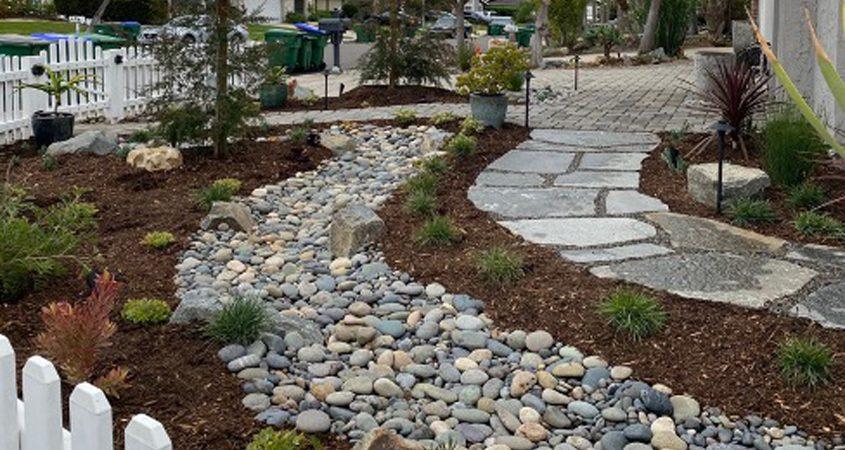
- Native Plant Selection: Embracing native plants in landscape design not only enhances biodiversity but also significantly reduces the need for irrigation. These plants are adapted to local climates and soil conditions, allowing them to thrive with minimal water resources, making them a sustainable choice for modern gardens.
- Rainwater Harvesting Systems: Implementing systems to collect and reuse rainwater is an innovative practice in contemporary landscape architecture. By directing runoff from roofs or paved surfaces into storage tanks, homeowners can utilize this resource for irrigation, decreasing dependence on municipal water supplies.
| Practice | Benefits |
|---|---|
| Drip Irrigation | Delivers water directly to plant roots, minimizing evaporation and runoff. |
| Mulching | Retains moisture in the soil while suppressing weeds, thus lowering the watering frequency. |
| Permeable Paving | Allows rainwater to seep into the ground, promoting groundwater recharge and managing stormwater runoff. |
Incorporating xeriscaping principles transforms water-scarce areas into beautiful, low-maintenance landscapes. By designing gardens that require minimal irrigation, these practices not only enhance aesthetic appeal but also prioritize ecological stewardship. Additionally, the use of smart irrigation technology enables real-time data monitoring, ensuring water is distributed efficiently, further contributing to conservation efforts.
Lastly, the application of bio-swales and green roofs helps manage stormwater while improving urban heat resilience. These features capture rainwater and promote infiltration, thereby minimizing runoff and reducing the risk of flooding. As landscape designers integrate such elements, they not only beautify environments but also foster sustainable practices that benefit our planet. For further insights on sustainable landscaping, visit EPA.
Use of color in Modern Landscape Design inspires emotional connections with outdoor spaces
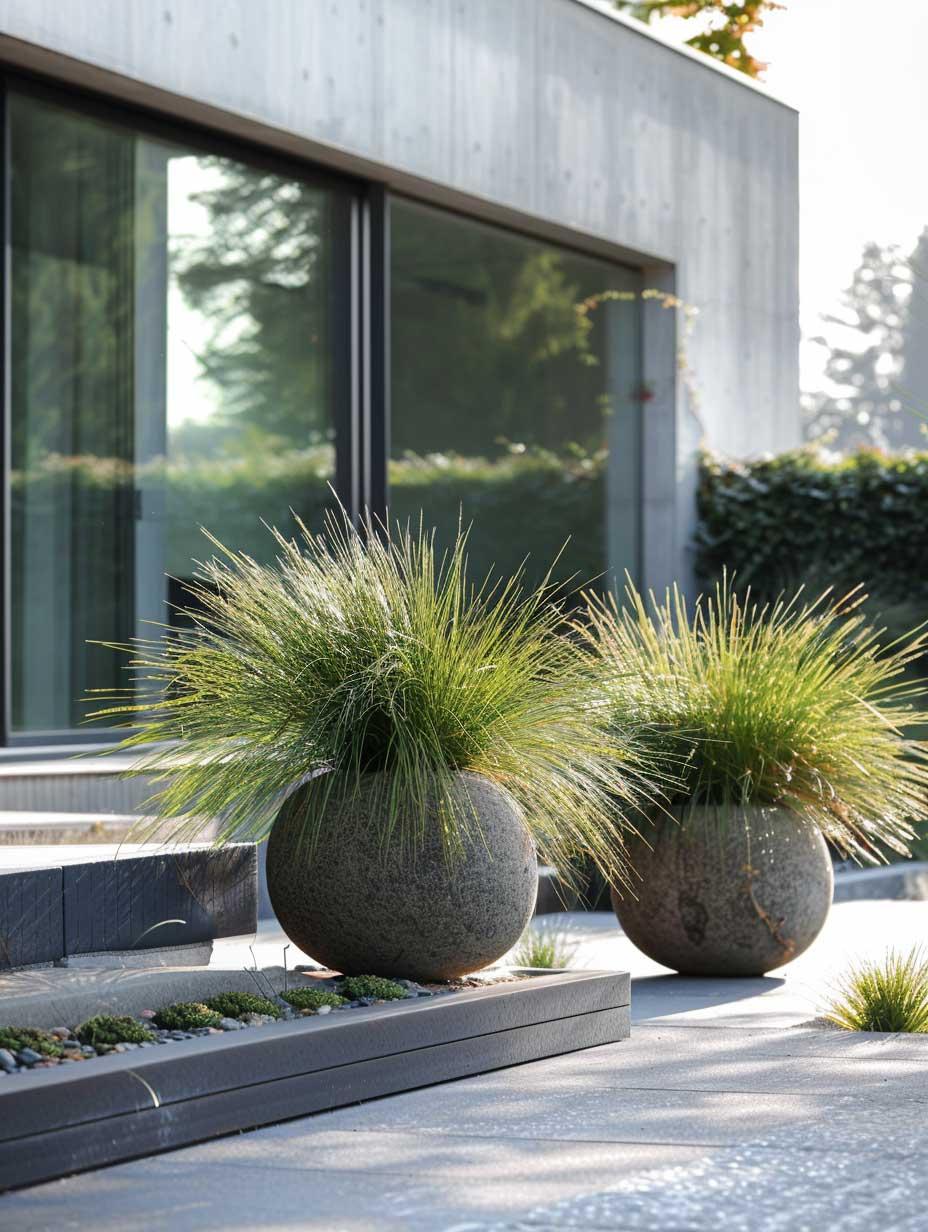
The careful selection and application of color in modern landscape design serve as a powerful tool to foster emotional connections with outdoor spaces. Landscape designers harness the psychology of color, understanding how different hues evoke specific feelings and reactions. Warm colors, such as reds, oranges, and yellows, create a sense of vibrancy and warmth, making spaces feel inviting and energetic. In contrast, cool colors like blues and greens can instill a sense of calm and serenity. By balancing these palettes with neutral elements, designers create harmonies that not only appeal visually but also influence the mood of those who inhabit these spaces.
Moreover, the strategic use of color can guide movement through a landscape, drawing the eye to focal points or leading visitors along pathways. Accent plants and decorative features in bold colors can serve as playful elements that inspire joy and exploration. For instance, a striking yellow bench placed against lush greenery becomes a perfect spot for relaxation, encouraging interaction with the environment. *Color-blocking techniques, as seen on walls or fences, can create a sense of structure while enhancing the overall aesthetic. This synergy between color and space ultimately invites a deeper emotional engagement, leaving lasting impressions on all who experience it. For more insights into how color affects our environment, check out Color Psychology.
Modern Landscape Design incorporates edible gardens, merging beauty with practicality
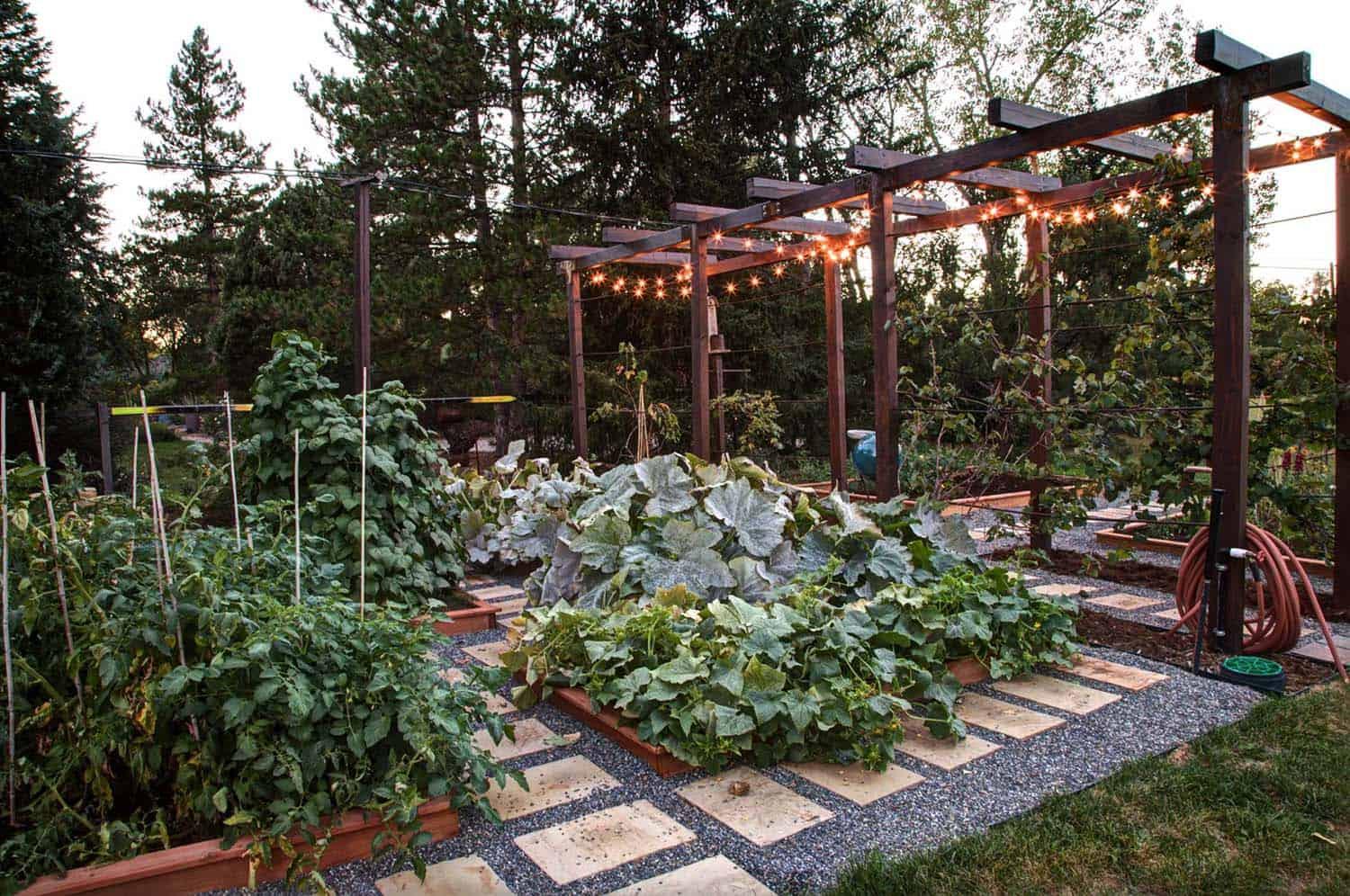
In today’s world where sustainability meets aesthetics, the integration of edible gardens in modern landscape design has gained significant traction. These gardens not only serve as beautiful focal points but also offer the practicality of homegrown produce. Imagine a vibrant herb spiral nestled amidst flowering perennials, or a raised vegetable bed framed by beautifully arranged ornamental grasses. This harmonious blend encourages homeowners to cultivate their food while enjoying the visual appeal of well-designed green spaces. The advantages are plentiful: fresh ingredients just steps away from your kitchen, reduced environmental impact, and a unique opportunity to engage with nature.
Furthermore, urban spaces are increasingly embracing this trend, showcasing how edible gardens can thrive even in small areas. Vertical gardening techniques can bring fresh produce to balconies or patios, making it feasible for city dwellers to indulge in gardening without sacrificing space. Communities are also coming together, transforming vacant lots into shared edible landscapes that not only beautify the neighborhood but foster social connections. Consider incorporating enticing features like edible flowers or fruit trees within traditional landscaping designs, adding both flavor and decor to your personal oasis. For more insights, explore Gardeners.com for creative ways to start your edible garden journey.
Artistic hardscapes create visual intrigue in Modern Landscape Design
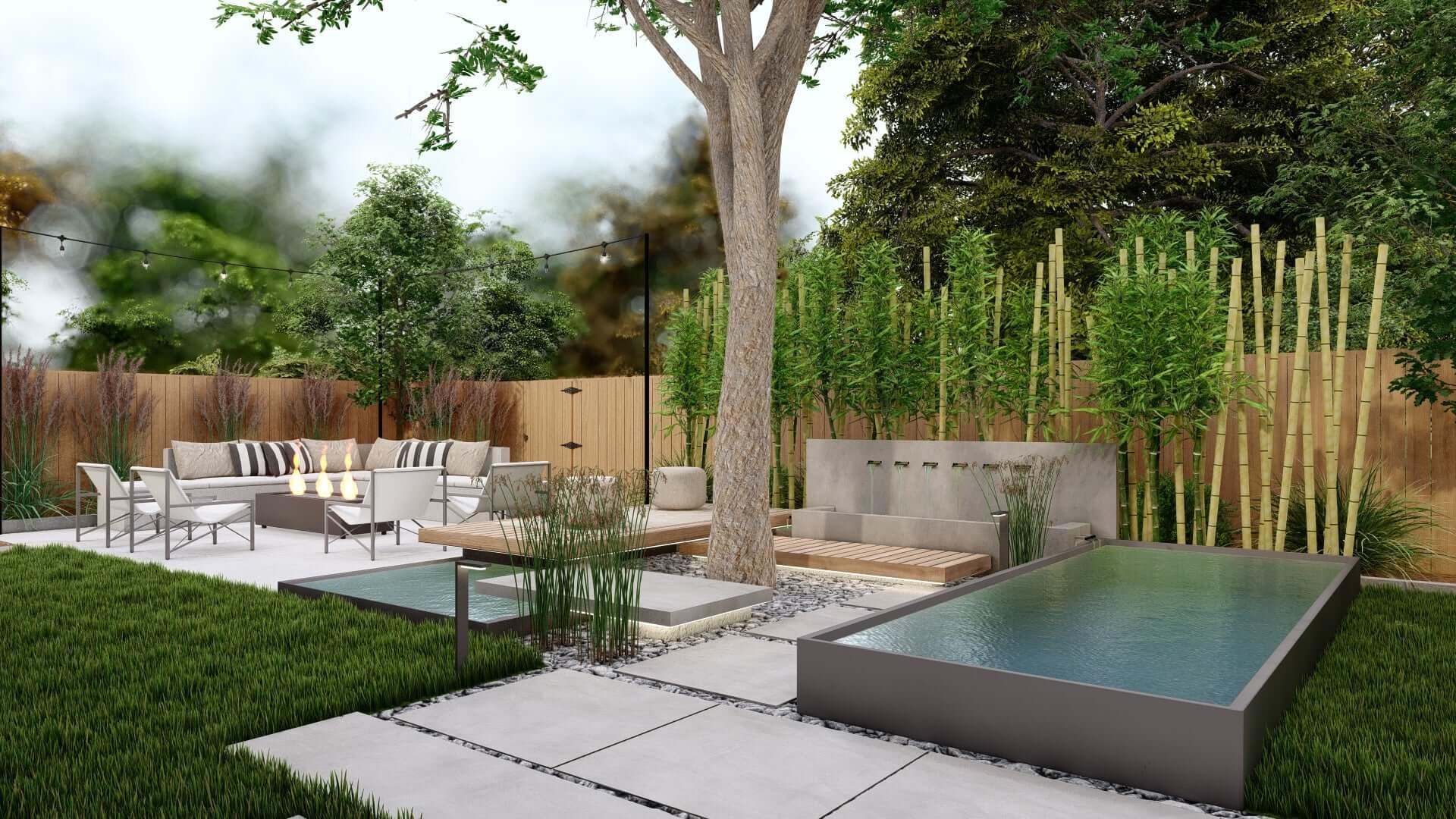
In the realm of modern landscape design, artistic hardscapes serve as a foundation that elevates the aesthetic appeal of an entire space. These intentional designs, which blend functionality with artistry, include elements such as geometric pavers, textured concrete, and vibrant stone layouts that create dynamic visual interest. By incorporating these unique materials and patterns, landscape architects breathe life into outdoor areas, inviting exploration and contemplation. Additionally, integrating features like retaining walls and fire pits not only enhances the structure but also provides cozy gathering spots that encourage social interactions within the environment.
Furthermore, the integration of water features—like contemporary fountains and reflecting pools—adds a serene layer to hardscape designs. These elements, when juxtaposed with pathways crafted from sleek stones or rustic bricks, create a harmonious balance between nature and architecture. Visitors are drawn to the interplay of light on water and the intriguing reflections that arise from well-planned compositions. To see a diverse range of artistic hardscape designs, explore resources at landscapearchitecture.com that showcase innovative ideas and real-world applications.
Connectivity between indoor and outdoor spaces is a hallmark of Modern Landscape Design
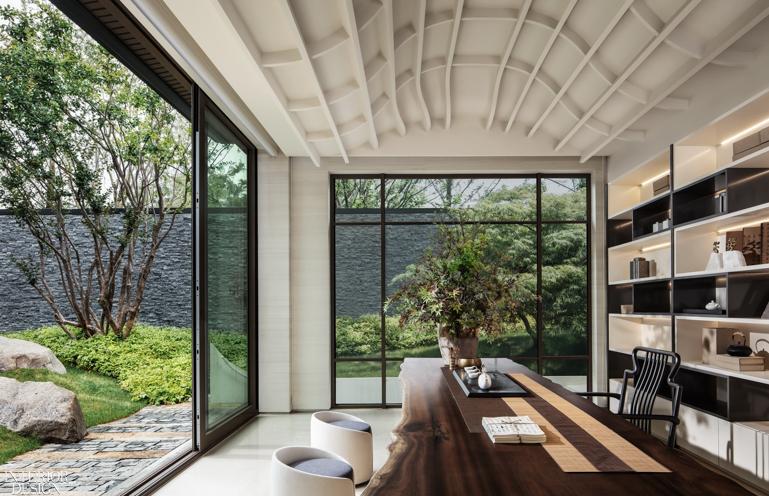
In contemporary landscape design, the seamless transition between indoor and outdoor environments creates an inviting atmosphere that defines modern living. Expansive glass doors that slide away or bi-fold windows not only enhance natural light but also encourage a flow of movement, merging living spaces with nature. This harmonious relationship often extends to outdoor kitchens, dining areas, and lounges, providing homeowners an opportunity to entertain in picturesque settings. By including elements like pergolas, awnings, and shade sails, designers ensure these outdoor amenities can be enjoyed year-round, regardless of the weather or time of day.
Furthermore, landscaping can be tailored to reflect the architecture of the home, allowing garden features to echo interior design elements. Materials such as stone, wood, and metal can be integrated into both spaces, cultivating a cohesive aesthetic. Innovative design also leverages technology, employing smart irrigation systems and ambient lighting that can be controlled from indoors, enhancing usability. A well-planned layout encourages indoor plants and living walls to connect both realms, creating micro-climates that enrich the living experience. For inspiration on harnessing nature in your home, check out articles on Lonny.
Vertical gardens provide innovative solutions in Modern Landscape Design for small spaces
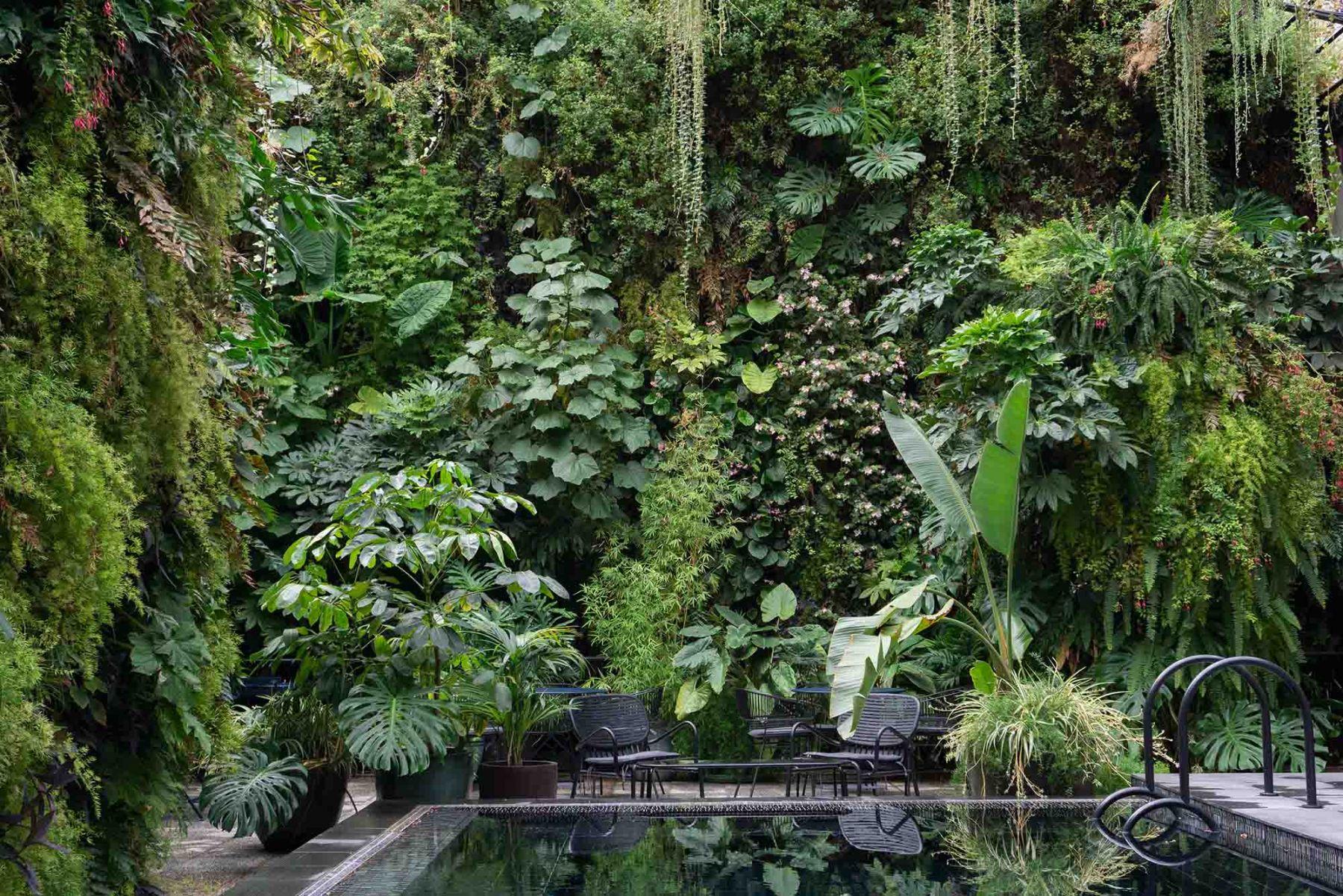
Vertical gardens are transforming the way we think about small outdoor spaces, bringing a burst of greenery to urban environments where traditional gardening may not be feasible. They allow for the creation of lush, vibrant displays while conserving valuable ground space, making them an ideal choice for balconies, narrow backyards, and even interior walls. The versatility of vertical gardens enables homeowners and designers alike to incorporate various plant types, from cascading vines to colorful flowers and even edible herbs, maximizing both aesthetics and functionality. A well-designed vertical garden can act as a striking focal point, adding depth and texture to a minimalist backdrop.
Moreover, these garden structures offer several benefits beyond their visual appeal. They help improve air quality, support biodiversity by providing habitats for beneficial insects, and regulate temperature, making indoor environments more comfortable. The lightweight materials and innovative irrigation systems often used in vertical gardens minimize maintenance and reduce water consumption. With the increasing popularity of sustainable design, vertical gardens are now being featured in urban planning, promoting green infrastructure and enhancing community well-being. For inspiration, check out Architectural Digest for the latest trends and ideas in vertical gardening.
Modern Landscape Design prioritizes biodiversity, inviting various species into residential areas
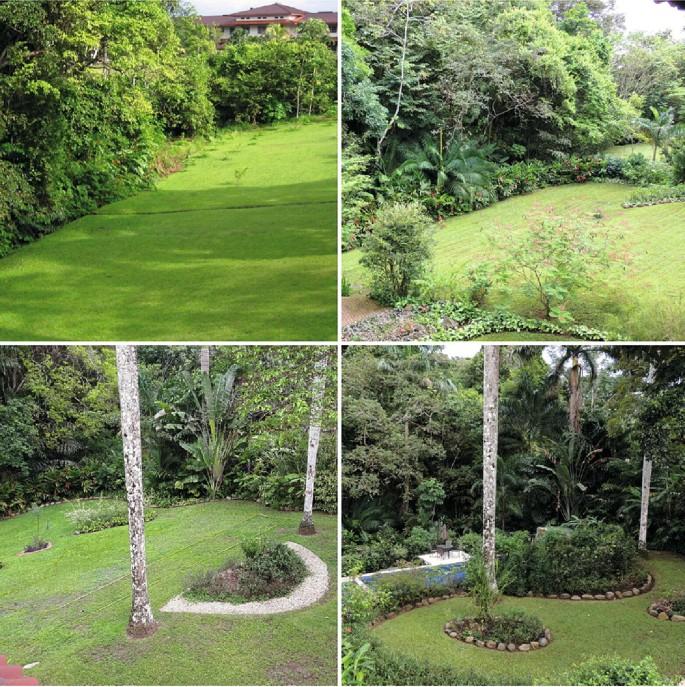
Contemporary landscape architecture embraces biodiversity by creating spaces that act as havens for a variety of species. Designers prioritize native plants that are well-adapted to the local climate and soil, ensuring that these botanical choices not only require less maintenance but also foster ecosystems. This approach simplifies the landscaping process while providing food and habitat for birds, pollinators, and beneficial insects. Incorporating elements like birdhouses, pollinator gardens, and butterfly habitats bridges the gap between urban development and the natural world, inviting life back into residential areas.
Additionally, modern designs often include features like rain gardens and permeable pavements that support aquatic wildlife by managing stormwater runoff sustainably. These construction techniques not only serve a functional purpose but also can be aesthetically pleasing, promoting a sense of connection with the environment. By implementing green roofs and wildlife corridors, landscape designers are making significant strides in restoring habitats within our urban frameworks. The result is a vibrant tapestry of life that enriches our surroundings, proving that even in densely populated areas, nature can flourish beautifully. For more insights into sustainable landscape practices, visit nature.org.
Sustainable materials are favored in Modern Landscape Design to reduce environmental impact
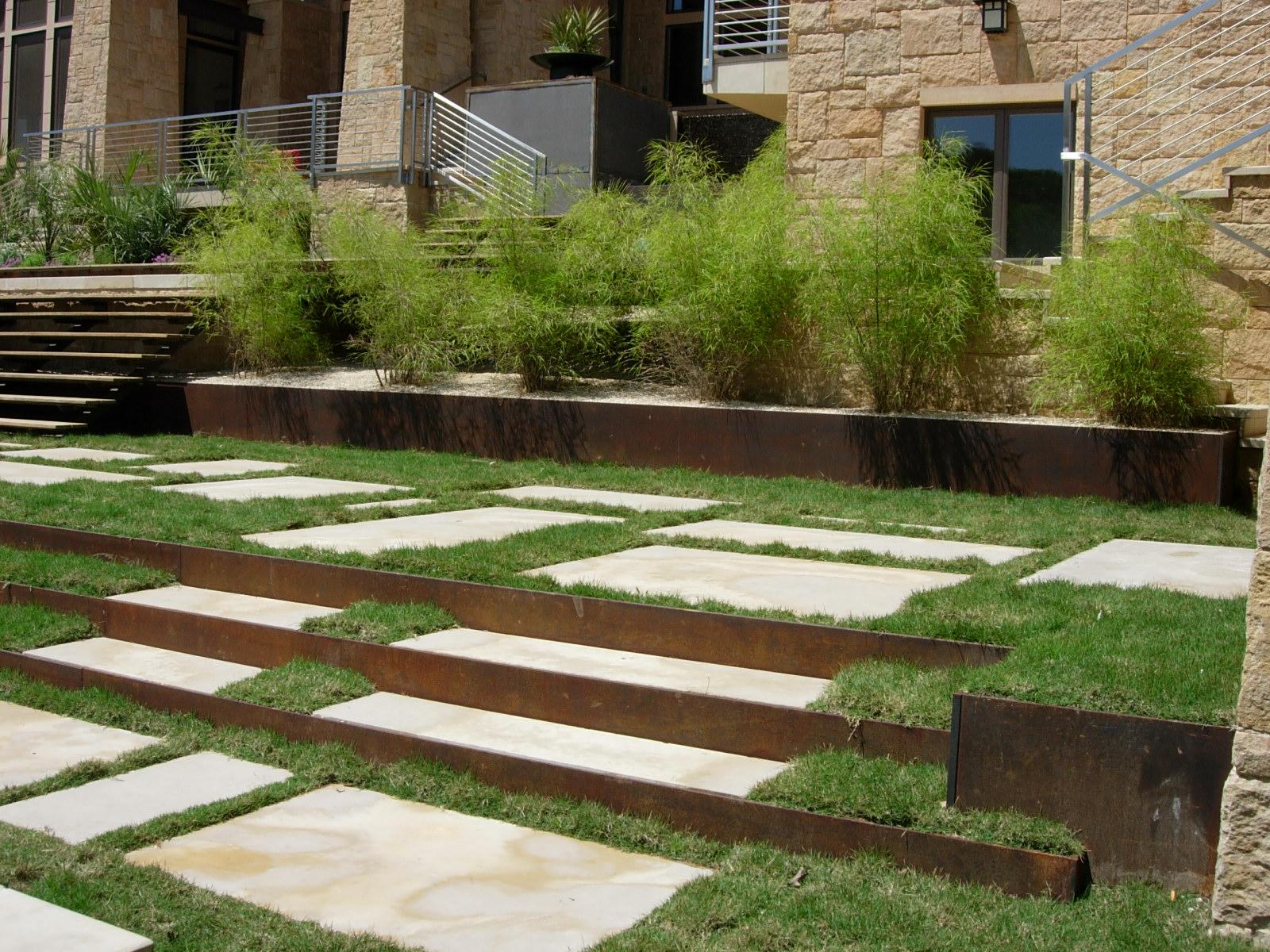
In the era of climate consciousness, modern landscape design is embracing a variety of sustainable materials that minimize environmental impact. Designers are increasingly opting for materials with low carbon footprints, such as recycled metal, composite wood, and permeable concrete. Not only do these choices help in reducing waste, but they also enhance the aesthetic versatility of outdoor spaces. By incorporating native plants into the landscape, designers promote biodiversity while ensuring the design complements the local ecosystem and requires less water, thereby supporting sustainability goals.
Beyond traditional materials, innovative solutions such as rain gardens and green roofs have gained prominence, illustrating a commitment to ecological harmony. The use of indigenous rock not only connects the landscape to the natural environment but also reduces transportation emissions often associated with imported materials. Furthermore, integrating features like reclaimed wood for decking or fencing can provide unique character while preventing deforestation. This holistic approach signifies a shift towards environmental stewardship in landscape architecture, encouraging both beauty and functionality in outdoor spaces. For more insights on sustainable design practices, visit EPA.
Lighting techniques in Modern Landscape Design enhance ambiance and usability after dark
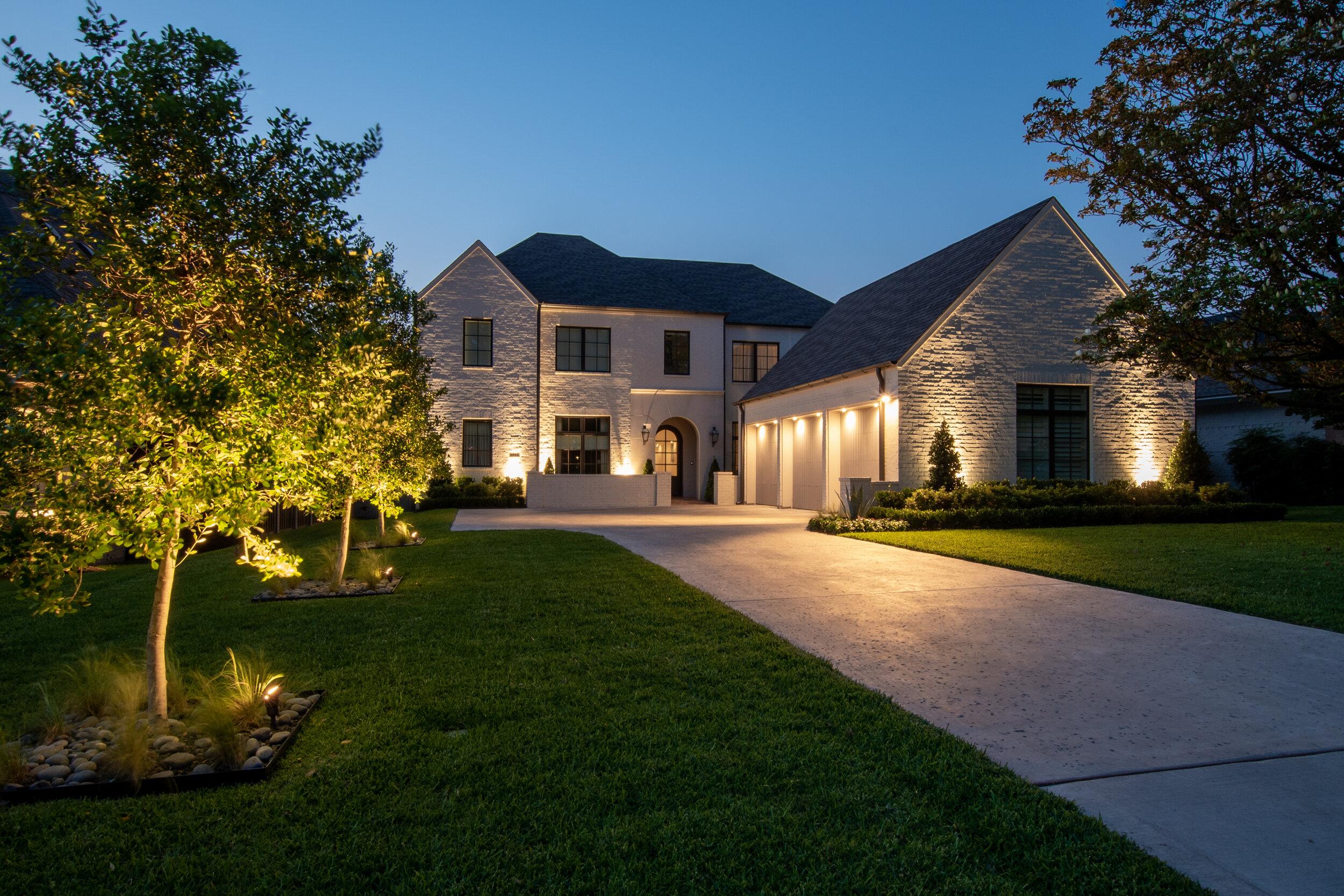
Modern landscape design has embraced an array of lighting techniques that not only enhance the ambiance of outdoor spaces but also boost their usability after dark. By integrating subtle uplighting, property owners can illuminate trees and architectural features, adding depth and dimension to the landscape. Pathway lights, strategically placed along walkways, create a safe and inviting environment, encouraging evening strolls and gatherings. Additionally, the use of solar-powered lights offers an eco-friendly option that requires minimal installation, giving homeowners flexibility in illuminating their gardens without sacrificing energy efficiency.
Moreover, highlighting water features with lighting dramatically transforms the mood of a space. LED spotlights can cast enchanting reflections across ponds and fountains, providing a sense of tranquility that captivates the senses. Incorporating smart lighting systems allows users to control brightness and color through their smartphones, adding a layer of customization perfect for different occasions. This blend of technology and creativity fosters an inviting atmosphere for outdoor living, ensuring that landscapes are as functional and mesmerizing at night as they are during the day. For more inspiration on integrating lighting into your landscape design, visit Architectural Digest.
Therapeutic gardens in Modern Landscape Design promote mental well-being and mindfulness
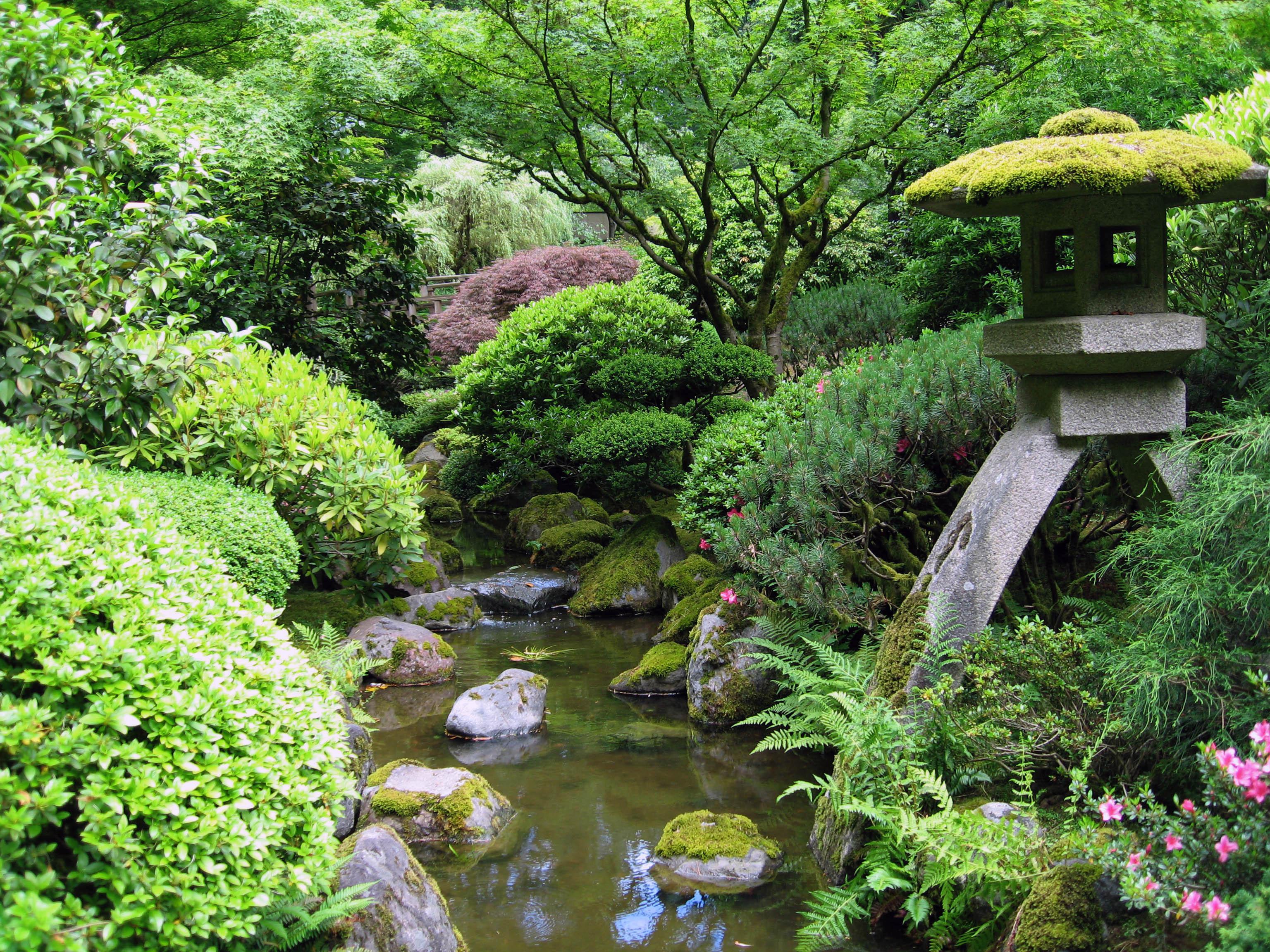
In the fast-paced world we live in, therapeutic gardens have emerged as a vital element in modern landscape design, offering a sanctuary for the soul. These carefully curated green spaces blend aesthetics with functionality, creating environments that encourage mental well-being and provide a serene backdrop for mindfulness practices. By incorporating elements such as native plants, sensory pathways, and water features, these gardens foster a deeper connection with nature, allowing individuals to escape the chaos of everyday life. Visitors can engage with their surroundings, breathing in the calmness and rejuvenating their spirits, which ultimately enhances their overall quality of life.
Aside from beauty, therapeutic gardens are designed with specific goals in mind. They can include:
- Seating Areas: Cozy nooks with benches or hammocks that invite relaxation and contemplation.
- Herb and Vegetable Sections: Spaces dedicated to growing plants that stimulate the senses and promote healthy eating habits.
- Art Installations: Sculptures or interactive pieces that inspire creativity and reflection.
- Sound Features: Gentle cascades or chimes that create a soothing auditory experience.
As communities recognize the importance of these sanctuaries, the integration of therapeutic gardens is increasingly being embraced. Such spaces have shown promising outcomes in enhancing mental health discussions and strategies, making them essential components of contemporary design principles.
Seasonal interest in Modern Landscape Design ensures beauty throughout the year
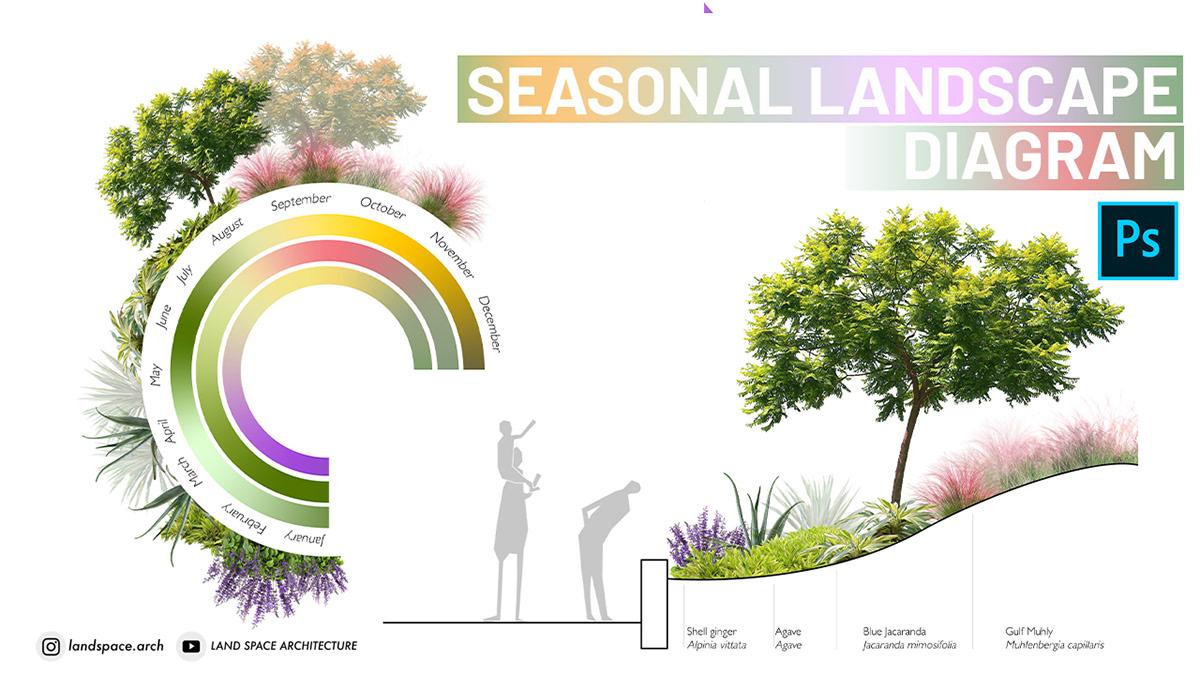
Modern landscape design embraces the beauty of each season, creating spaces that captivate the eye year-round. To achieve this, designers incorporate a range of seasonally diverse plants that bloom and change colors throughout the year. Features such as evergreen shrubs, perennial flowers, and seasonal bloomers ensure that the landscape is vibrant regardless of the time of year. For example, combining the winter colors of holly and snowdrop with spring favorites like tulips and daffodils allows for a seamless visual transition from one season to another. Additionally, the implementation of textural contrasts offers depth, with grasses that sway gently in the wind alongside sturdy, sculptural plants, enhancing the seasonal spectacle.
Another essential component is the thoughtful layout of hardscapes, which provide structure and stability to the garden. Elegant pathways, stone patios, and wooden decks can be adorned with planters that display seasonal arrangements, ensuring that outdoor spaces remain inviting. Utilizing design elements such as water features, which reflect the changing skies, enhances the overall aesthetics—transforming with the seasons while providing a serene atmosphere. More details about achieving seasonal interest can be found at gardenista.com. This focus on year-round beauty encourages homeowners to engage in their outdoor spaces, celebrating nature’s cycles while fostering a deep connection between architecture and the environment.
Community-oriented spaces reflect social connectivity within Modern Landscape Design
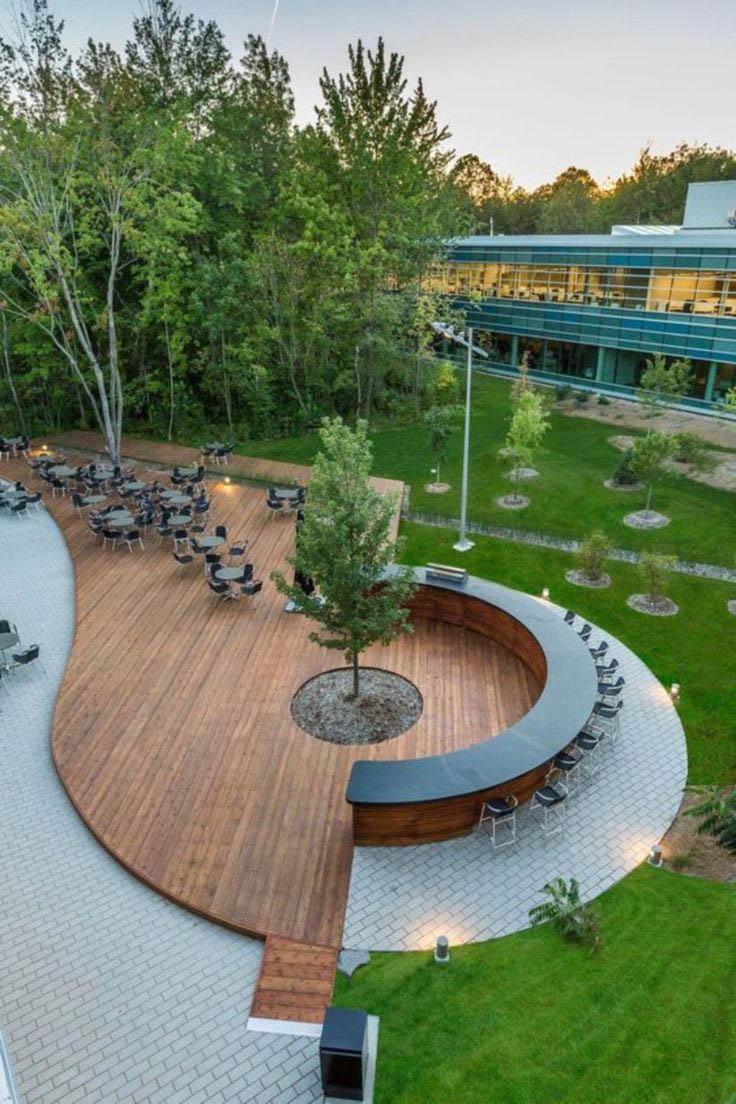
Modern landscape design increasingly prioritizes community-oriented spaces that foster social interaction and connectivity among residents. These environments are carefully curated to encourage engagement, collaboration, and a sense of belonging. Whether through the incorporation of communal gardens, open-air gathering areas, or shared recreational facilities, designers are recognizing the power of landscapes to bring people together. Key features include:
- Community Gardens: Spaces where residents can cultivate plants and vegetables, promoting sustainability.
- Multi-use Plazas: Dynamic areas that host events, markets, or simply serve as a gathering place.
- Sculptural Seating: Artistic seating arrangements that invite conversation and relaxation.
- Play Zones: Areas designed for children that double as social spaces for families.
- Walking Paths: Safe, interconnected routes that encourage foot traffic and spontaneous gatherings.
To reflect the growing importance of these community spaces, modern landscape designs often integrate ecological elements that support both nature and neighborhood interactions. Elements such as rain gardens and native plantings not only enhance biodiversity but also create visually appealing environments where people can connect with their surroundings. A thoughtful approach to materials and features, such as:
| Material | Purpose |
|---|---|
| Pervious Pavement | Enhances stormwater management while allowing gatherings. |
| Natural Stone | Adds aesthetic value and creates durable seating areas. |
| Recycled Wood | Provides eco-friendly seating and table options. |
These design choices highlight a commitment to not only beautifying public spaces but also cultivating relationships within communities. For more insights on the significance of community spaces in modern design, visit australianlandscapearchitecture.com.
Textural diversity in Modern Landscape Design adds depth and interest to landscapes
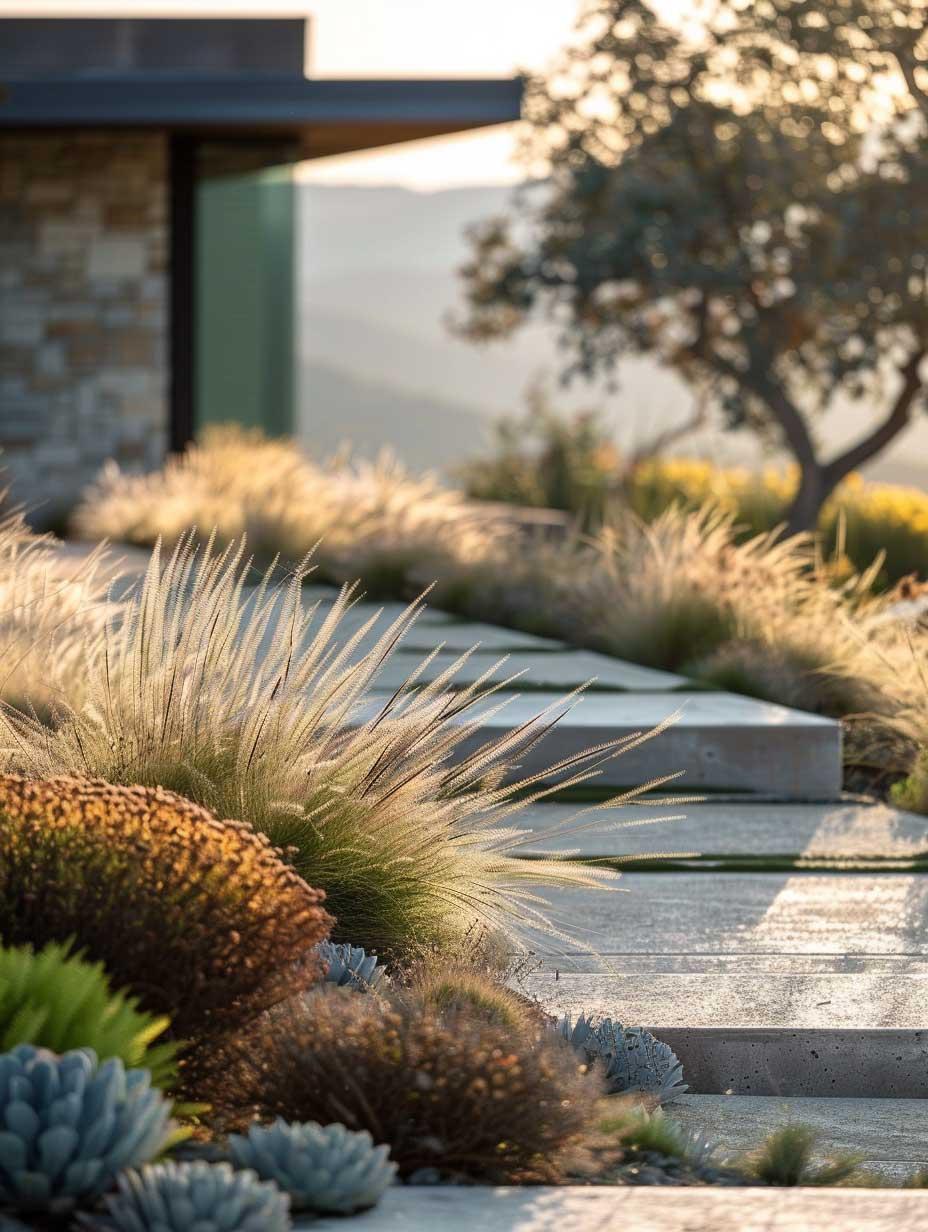
In modern landscape design, the practice of incorporating a myriad of textures can transform an ordinary garden into an extraordinary sensory experience. By juxtaposing various materials, from smooth and polished stones to rough and weathered wood, designers can create a rich tapestry that invites exploration. Elements such as ornamental grasses, succulents, and bark-textured trees not only serve practical purposes—such as erosion control and providing shade—but also fill spaces with visual intrigue that evolves with the seasons. The interplay of these textures encourages interaction and contemplation, drawing visitors deeper into the landscape.
Moreover, innovative use of hardscapes and softscapes can elevate the depth of a garden space. Unique paving styles made from materials like reclaimed wood, stamped concrete, or polished stones create pathways that invite movement and surprise. Retail spaces have embraced textural diversity, employing walls adorned with vertical gardens or textured cladding to enhance the customer journey. As you curate your outdoor environments, consider the role of texture not only in aesthetics but also in how these elements engage the public. For more inspiration on this topic, check out Land8.
The use of local artisans showcases craftsmanship in Modern Landscape Design
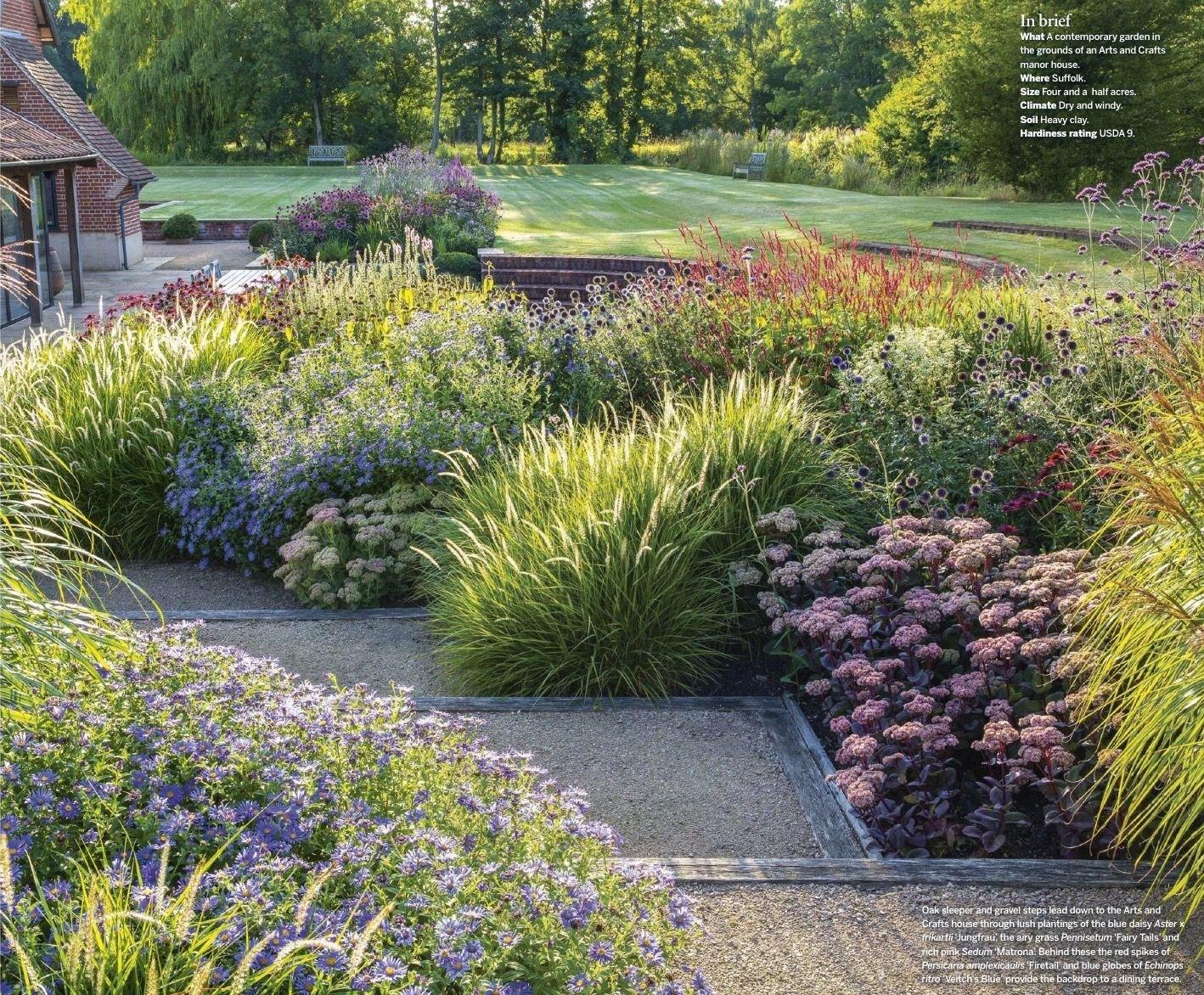
- Unique Textures and Materials: Local artisans often employ traditional techniques and locally sourced materials that lend a unique touch to modern landscape designs. From hand-crafted stone pathways to bespoke outdoor furniture, these elements showcase the rich texture and authenticity that mass-produced items simply cannot replicate. Utilizing natural materials aligns with eco-friendly practices, creating harmony between the environment and the artistry of craftsmanship.
- Custom Art Installations: Incorporating custom sculptures and art pieces made by local artisans adds a distinctive character to outdoor spaces. These handcrafted creations serve as focal points that reflect the culture and heritage of the area, inviting visitors to appreciate the story behind each piece. By showcasing local talent, landscape designers not only enhance aesthetic appeal but also foster a sense of community and artistic expression.
| Artisan Craft | Description | Benefits |
|---|---|---|
| Hand-crafted Stonework | Custom stone pathways and patios. | Durable, unique textures. |
| Wooden Elements | Locally sourced custom benches and decks. | Warm, inviting atmosphere. |
| Custom Sculptures | Local artist-created garden ornaments. | Distinctive focal points that tell a story. |
For more insights into the importance of supporting local artisans in design, you can visit Artisan.
Pollinator-friendly gardens become essential features in Modern Landscape Design
In the era where ecological awareness is paramount, the integration of pollinator-friendly gardens has become a cornerstone of modern landscape design. Homeowners and landscape architects alike recognize the importance of creating habitats that support bees, butterflies, and other essential pollinators. These gardens not only enhance the beauty of outdoor spaces but also contribute significantly to biodiversity. Features such as native flowering plants, herbal patches, and diverse shrubs can attract a variety of pollinators while requiring less maintenance than traditional high-input gardens.
Designing a pollinator-friendly garden involves thoughtful selection of plants that bloom at different times of the year, ensuring a continuous food source. Garden structures such as wildflower meadows, nectar-rich borders, and insect hotels provide not just sustenance but also habitats for various species. By incorporating elements like a water source or patches of bare soil, the landscape can further support the life cycles of these beneficial creatures. Such gardens stand as a testament to responsible landscape design, encouraging future generations to appreciate and nurture the natural world around them. For more details on creating these essential habitats, visit pollinator.org.
Climate-responsive design optimizes the advantages of local weather in Modern Landscape Design
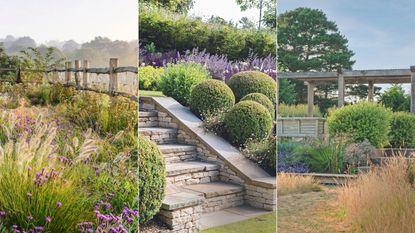
Modern landscape design is increasingly embracing sustainability through climate-responsive design, which capitalizes on the unique characteristics of local weather to enhance both aesthetics and functionality. By integrating native plants that thrive in the local environment, designers not only create visually stunning spaces but also support local ecosystems. This approach minimizes water usage and reduces maintenance, allowing nature to play a central role in the landscape. Additionally, the strategic placement of trees can provide essential shade during hot summers, improving outdoor comfort and contributing to energy efficiency in nearby structures.
Moreover, the incorporation of permeable paving and bio-swales reflects a commitment to managing rainfall effectively, allowing for natural water filtration and reducing runoff. By designing landscapes that can adapt to seasonal changes, such as incorporating seasonal blooms or drought-resistant features, modern landscaping reflects a deep appreciation for the local climate. The result is a harmonious interplay between built and natural environments that not only looks great but also serves the community and its wildlife. For more insights on sustainable landscaping, visit landscapejournal.org.
Artistic sculptures transform spaces into focal points in Modern Landscape Design
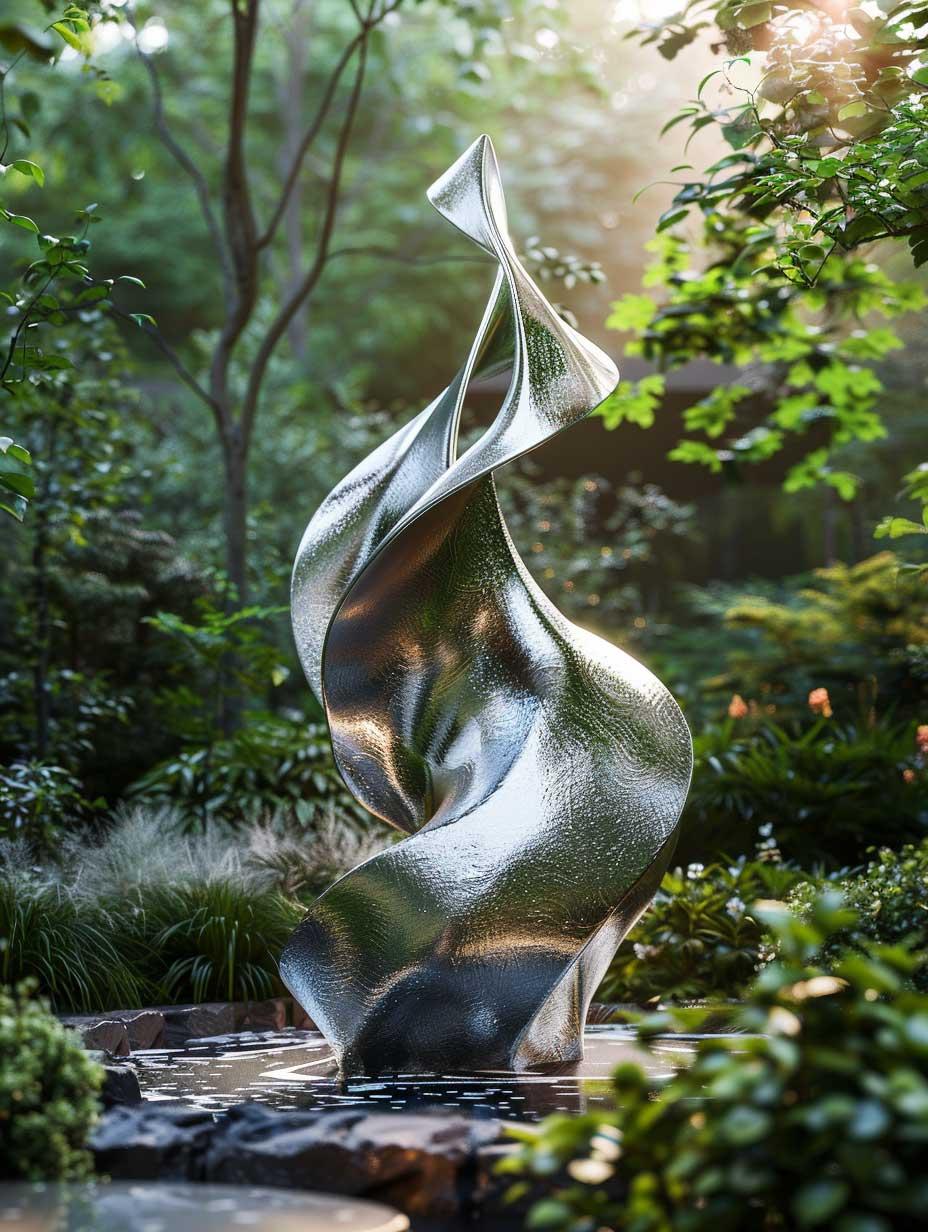
In the realm of modern landscape design, artistic sculptures serve as striking focal points that imbue outdoor spaces with character and creativity. These pieces, ranging from abstract forms to intricate representations of nature, encourage onlookers to pause and appreciate their surroundings in a profound way. Their placement can transform a garden into a gallery, a park into a conversation starter, or a backyard into a personal retreat. Whether crafted from metal, stone, or even biodegradable materials, the right sculpture can harmonize with the environment, complementing plants and paths while providing an unexpected burst of inspiration.
The beauty of incorporating sculptures into landscape design lies not just in aesthetics but also in their ability to convey themes and messages. Interactive sculptures, such as those meant for climbing or touching, invite engagement and foster a sense of community. Meanwhile, lighting can be strategically installed to highlight these artistic elements after sunset, enhancing their allure and altering the night’s atmosphere. Innovative design strategies often see these elements arranged in conversational clusters, where multiple sculptures can relate to one another, creating an overarching narrative that captivates visitors. For more ideas on integrating art into landscapes, check out architecturaldigest.com.
Modern Landscape Design creates serene retreats that foster relaxation and escape
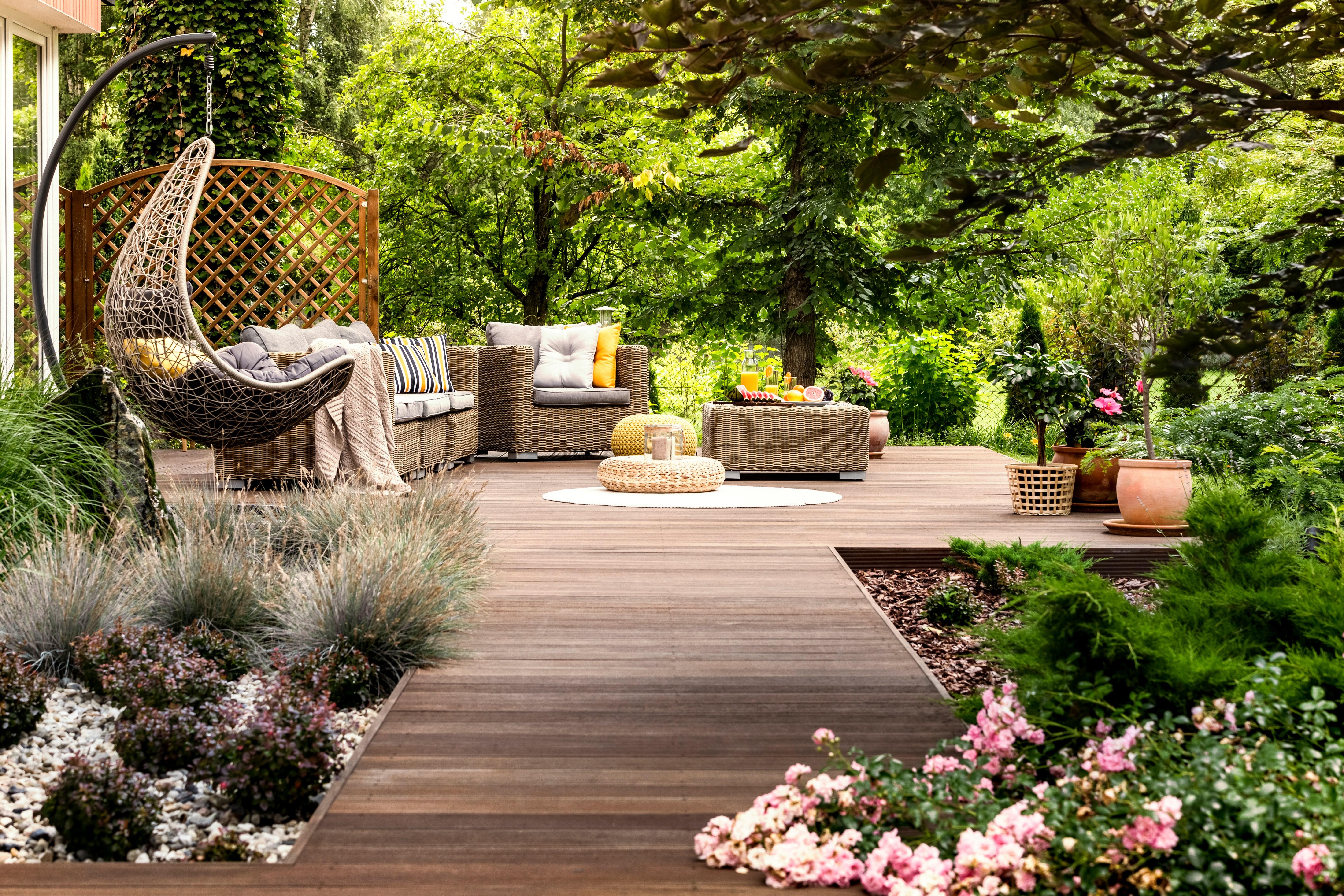
Modern landscape design beautifully marries function and aesthetic, producing outdoor spaces that serve as peaceful retreats. With an emphasis on natural materials and eco-friendly practices, these landscapes often feature harmonious elements that draw inspiration from the surrounding environment. Think of pathways lined with local stones, greenery that blends seamlessly into the landscape, and water features that create soothing sounds. In turn, native plants are favored, not only for their appearance but also for their ability to thrive with minimal maintenance, cultivating a sense of ease and tranquility for homeowners.
Creating zones for relaxation is paramount in contemporary outdoor planning. Landscapes now often include cozy seating areas nestled among lush foliage, fire pits that encourage gathering under the stars, and outdoor kitchens that bring the joys of cooking into the open air. Additionally, incorporating vertical gardens can transform even the smallest spaces into green havens, offering a retreat from urban life. This approach encourages a connection to nature, making it possible to escape without leaving home. Explore more on this subject at The Spruce.
Key Takeaways
As we stand on the brink of a new era in landscape design, it’s evident that the elements shaping our outdoor spaces today are as diverse as they are inspiring. From sustainable practices to innovative technologies, each of the 23 elements we’ve explored serves as a testament to human creativity and our deepening connection with nature.
Whether you’re a landscape architect, a gardening enthusiast, or someone simply seeking to beautify their own outdoor sanctuary, these inspirations invite you to rethink the way we interact with our environments. As you take these ideas into your own projects, remember that the heart of modern landscape design lies in balance—between aesthetics and functionality, nature and nurture, tradition and progression.
May your journey in the world of landscape design not only transform your spaces but also inspire a greater appreciation for the natural world around us. Happy designing!
